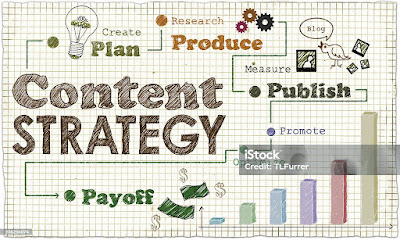Introduction
In the ever-evolving landscape of the internet, Web3 has emerged as a disruptive force, promising to revolutionize the way content is created, distributed, and monetized.
Traditional models of content monetization, which have long relied on centralized platforms and intermediaries, are now facing a paradigm shift as Web3 technologies gain traction.
Web3, often described as the decentralized web, is built on blockchain technology, smart contracts, and decentralized autonomous organizations (DAOs).
These technologies offer new opportunities for creators to directly engage with their audiences, establish ownership of their content, and explore innovative revenue streams.
Let's delve deeper into the impact Web3 is poised to have on traditional models of content monetization and revenue generation.
Decentralized Ownership and Control
One of the fundamental principles of Web3 is decentralization, which empowers creators by giving them greater ownership and control over their content.
Unlike traditional platforms where content is hosted on centralized servers owned by corporations, Web3 platforms utilize decentralized storage solutions like IPFS (InterPlanetary File System) or blockchain-based storage networks.
This shift towards decentralized ownership ensures that creators retain full control of their content and are not subject to the whims of platform policies or algorithms.
Tokenization and Micropayments
Tokenization lies at the heart of Web3 monetization models, enabling creators to tokenize their content and sell it directly to their audience. By leveraging blockchain technology, creators can issue non-fungible tokens (NFTs) representing ownership of digital assets such as artwork, music, videos, or articles.
These NFTs can be bought, sold, and traded on decentralized marketplaces, providing creators with a new avenue for monetization.
Moreover, Web3 facilitates micropayments through cryptocurrencies, allowing users to pay small amounts of digital currency for access to premium content or to support their favorite creators.
This direct peer-to-peer payment model bypasses traditional payment gateways and eliminates the need for intermediaries, enabling creators to capture a larger share of their revenue.
Community Governance and Participation
Another significant aspect of Web3 is the concept of DAOs, which are decentralized autonomous organizations governed by smart contracts and token holders.
Creators can establish DAOs to engage their community in decision-making processes, such as content curation, funding initiatives, or governance policies.
By involving their audience in these decentralized governance structures, creators can foster a sense of ownership and belonging, while also incentivizing community participation through token rewards or voting rights.
Challenges and Considerations
While the promise of Web3 is compelling, it also presents challenges and considerations for content creators and consumers alike. Scalability, user experience, and regulatory compliance are among the key hurdles that need to be addressed as Web3 platforms continue to evolve.
Moreover, the nascent nature of blockchain technology and decentralized networks may deter mainstream adoption in the short term.
Furthermore, the transition from centralized to decentralized models of content monetization requires a shift in mindset and infrastructure.
Creators must familiarize themselves with blockchain technology, smart contracts, and decentralized platforms, while also navigating the complexities of tokenomics and community engagement.
Final Thoughts
In conclusion, Web3 holds immense potential to transform traditional models of content monetization and revenue generation. By embracing decentralization, tokenization, and community governance, creators can unlock new opportunities for financial independence, creative expression, and audience engagement.
While the journey towards a fully decentralized web may be fraught with challenges, the principles of Web3 offer a glimpse into a future where creators are empowered, audiences are engaged, and content monetization is democratized.
As we navigate this paradigm shift, it is essential to embrace innovation, collaboration, and inclusivity to realize the full potential of Web3 in shaping the future of content creation and consumption.
Edited By - Mobashsharin
Disclaimer
This article has been authored exclusively by the writer and
is being presented on Eat My News, which serves as a platform for the community
to voice their perspectives. As an entity, Eat My News cannot be held liable
for the content or its accuracy. The views expressed in this article solely
pertain to the author or writer. For further queries about the article or its
content you can contact on this email address - mobashsharin@gmail.com










0 Comments